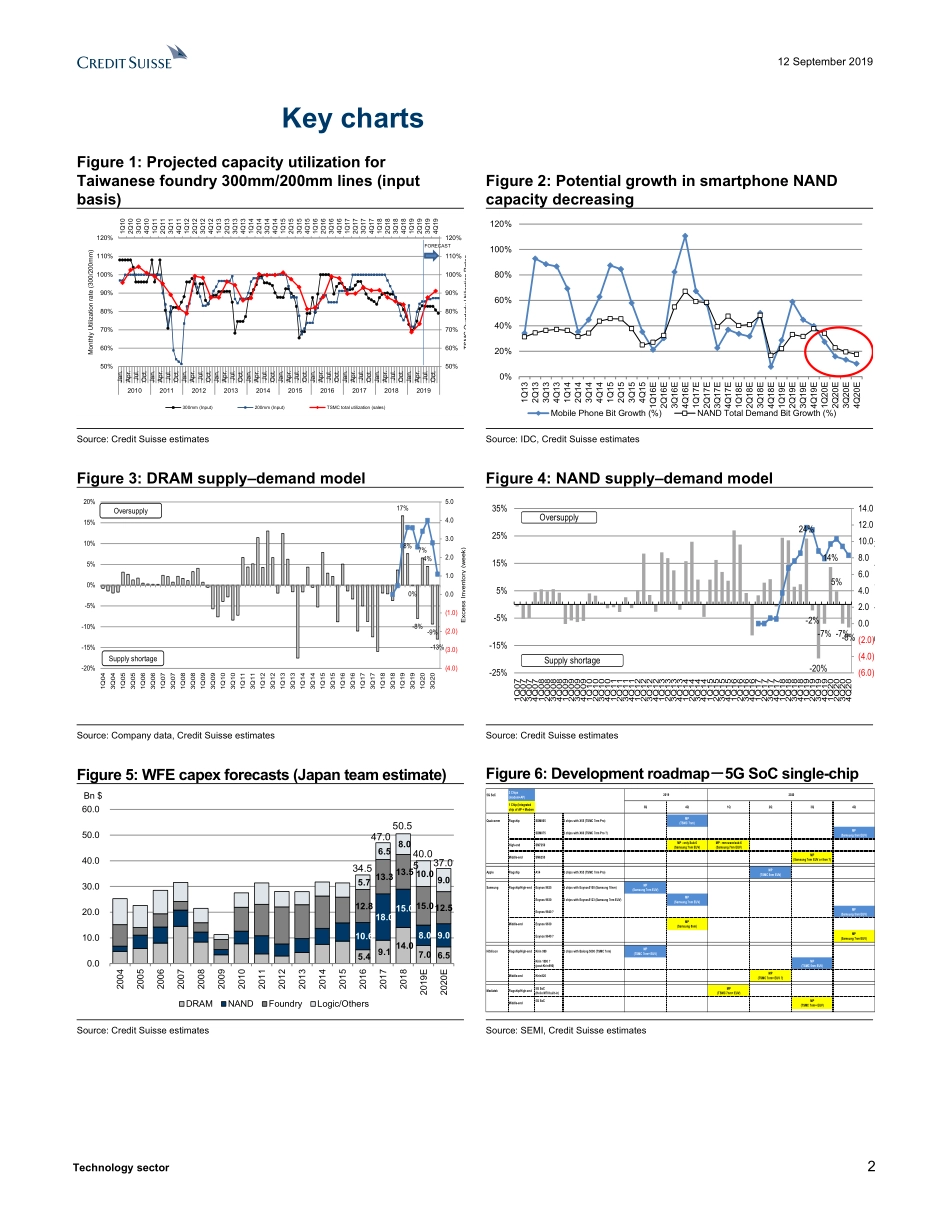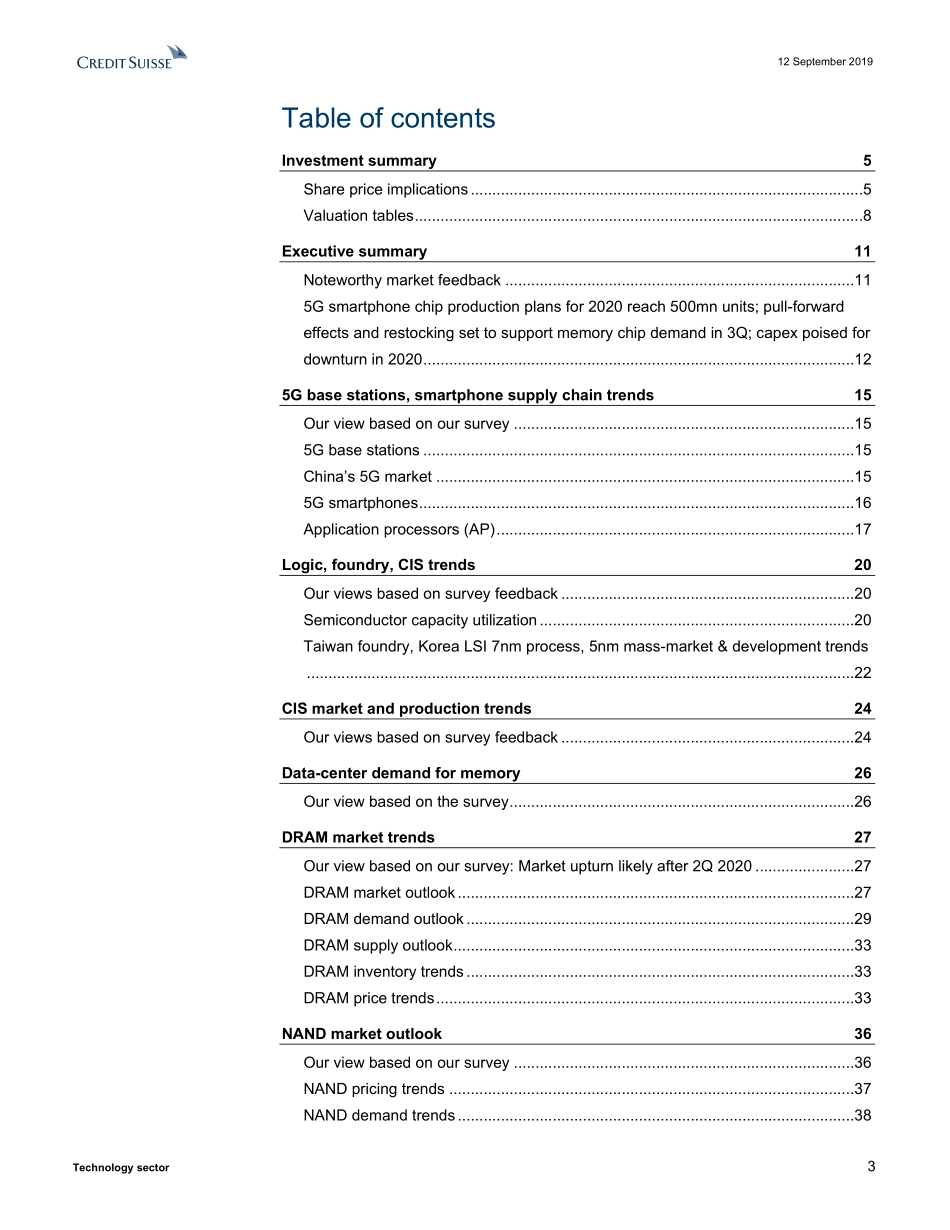DISCLOSURE APPENDIX AT THE BACK OF THIS REPORT CONTAINS IMPORTANT DISCLOSURES, ANALYST CERTIFICATIONS, LEGAL ENTITY DISCLOSURE AND THE STATUS OF NON-US ANALYSTS. US Disclosure: Credit Suisse does and seeks to do business with companies covered in its research reports. As a result, investors should be aware that the Firm may have a conflict of interest that could affect the objectivity of this report. Investors should consider this report as only a single factor in making their investment decision. 12 September 2019Asia Pacific/JapanEquity ResearchTechnology Technology sector COMMENTResearch AnalystsHideyuki Maekawa81 3 4550 9723hideyuki.maekawa@credit-suisse.comAkinori Kanemoto81 3 4550 7363akinori.kanemoto@credit-suisse.comMika Nishimura81 3 4550 7369mika.nishimura@credit-suisse.comYoshiyasu Takemura 81 3 4550 7358yoshiyasu.takemura@credit-suisse.comSayaka Shimonishi81 3 4550 7364sayaka.shimonishi@credit-suisse.comDaisuke Tanimoto81 3 4550 7371daisuke.tanimoto@credit-suisse.comAsia Feedback (Semiconductor/SPE): Next fanfare over 5G chip production; underlying memory demand weak■Event: From late August through early September we carried out an Asia market survey. We found nothing that would change our cautious view of the fundamentals aside from upbeat 5G chip production plans for 2020. The majority opinion among survey respondents was that 4Q 2019 and 1Q 2020 could see a pullback following 3Q supply chain trends that exceeded underlying demand, such as front-loading ahead of tariff hikes due to the US–China trade dispute and restocking due to Japan's restrictions on exports to Korea. In a sharp divergence from stock market expectations, virtually no industry respondents expected a recovery from the cycle trough, particularly in memory.■The new positives confirmed by our survey are (1) plans to produce 500mn 5G smartphone chips in 2020, (2) Apple having application processor (AP) for new 2020 iPhone models entirely produced using 5nm processes, (3) plans to launch a smartphone with a five-lens camera in 2020, (4) the outlook for greater adoption in Chinese data centers of ARM server CPUs manufactured by HiSilicon, (5) the adoption of LP-DDR5 by the Galaxy S11 in spring 2020, with one model to come with 16GB, and (6) tight supply–demand conditions for ASICs for cryptocurrency mining.■New negatives include (1) HiSilicon's plan to halve LTE AP output in 4Q, (2) expected 4Q oversupply for mobile RAM resulting from a switch from server DRAM, (3) server DRAM pricing (32GB) below the $100 break-even point, (4) the emergence of structural issues with increasing smartphone NAND capacity as demand for 256 and 512GB NAND is weaker than NAND makers envisaged, and (5) the risk that NAND bit growth could be capped at 20–25% in the future, which would obviate the need for new capacity expansion and mean only multilayer investment is needed. Other negatives include (6) NA...


